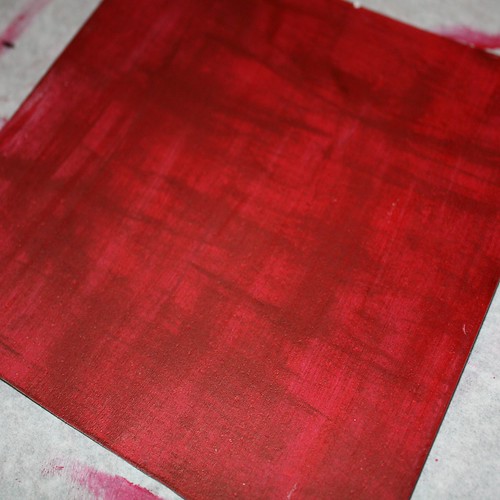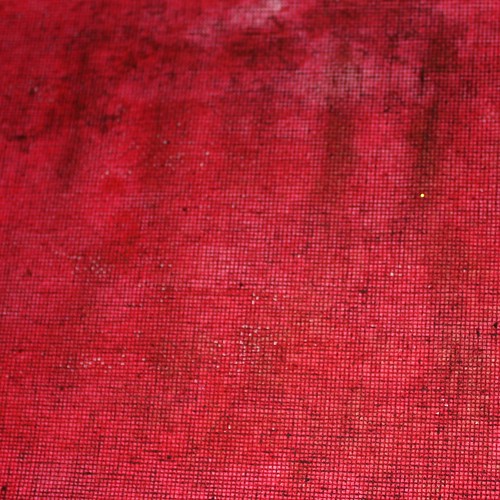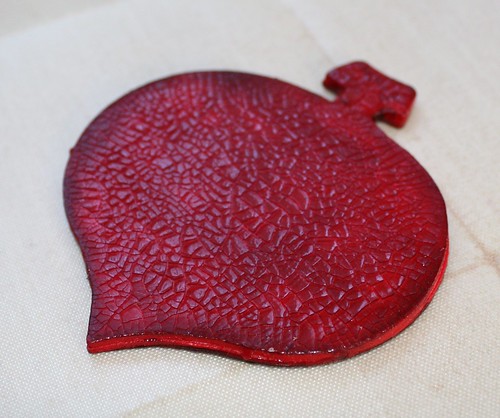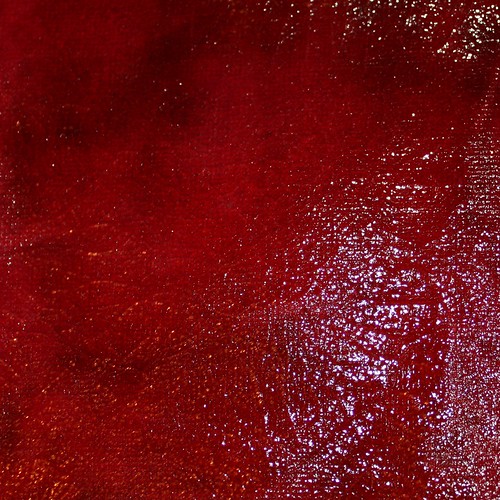Materials:
Jo Sonja Crackle Medium
red acrylic paint
Tim Holtz Distress Inks:
* Aged Mahogany
Liquitex Gloss Medium
Tools:
Sizzix Big Shot die cutting machine
Tim Holtz Carved Ornaments die
paintbrushes
If you have heard the name Tim Holtz then you are probably familiar with his 12 Tags of Christmas. Each year, going back four years now, he has designed 12 seasonal tags. They're beautiful, if you haven't seen them or want a refresher, you can find them on his blog.
I've been spending a lot of time looking at and analyzing his tags this past week, and I would like to challenge myself to take each tag and turn it into an ornament using one of the carved ornament dies rather than a tag, as well as teach myself new techniques by following Tim's excellent step by step instructions and videos.
The first one I wanted to try is this:
Gorgeous isn't it?! And so many variations can be taken from this one tag. I decided I want to emulate the red crackle on the base of the ornament, so the first step was to get cracking!
First off, here is the link to Tim's ornament, and his step by step instructions.
He uses grungeboard as his base. I am quite partial to balsa myself, but in the spirit of trying new things I went ahead and did a comparison using balsa, grungepaper and canvas - not the sticky back kind but the type you can buy in artists pads that are pre-primed with gesso.
So what is grungeboard? I don't have grungeboard, but I do have grungepaper. It is a mid-grey colour, like pulped up newspaper, and it smells and feels just like fake leather. It's flexible and very strong, very versatile, great stuff to work with.
What Tim did: Ink the piece of grungeboard with fired brick distress ink.
What I did: I don't have fired brick distress ink, but I do have dozens of acrylic paints and aged mahogany distress ink. So I went ahead and gave each medium a base coat of red acrylic paint, and when that was dry, then I swiped over it with the aged mahogany ink.
 |
| Grungepaper |
The grungepaper doesn't require any additional prep-work, that is one of it's features. I simply applied one coat of red acrylic paint and when that was dry swiped the entire surface with the Aged Mahogany ink.
 |
| Balsa Wood |
I use 1.5mm balsa wood, which the steel rule dies cut through like butter. However, they must be cut and then painted, as the additional layers of paint and crackle medium make it too thick to go through the Big Shot, I know I tried! I cut two blanks from balsa, glued them together and let them dry before applying the paint and ink. You can see here how the wood grain has picked up the ink.
 |
| Artists Canvas |
The artists canvas came in an A5 pad of 20 sheets that you tear off just like note paper. Each sheet has been pre-primed with gesso, so I didn't give any additional preparation before applying the acrylic paint and then inking. You can see how the fibres have picked up the distress ink.
What Tim did: Apply a layer of Rock Candy Distress Crackle Paint
What I did: I don't have, and won't buy, the Distress Crackle Paints. A 33ml bottle of it here in Australia will set you back $8-10, and the expectation is that you need many different colours.
Instead I used Jo Sonja Crackle Medium, which is $16 for a 250ml bottle, for those that work in oz, that's the equivalent of 7 1/2 bottles of Distress Crackle for only twice the price. Jo Sonja Crackle Medium is, for all intents and purposes, Rock Candy Distress Crackle. It is a completely clear medium that is self cracking when it dries. It can also be mixed with any colour of acrylic paint to create your own palette of 'crackle paints'.
A word of advice when looking at crackle mediums. There are several types, but the two most common waterbased ones are a 'one step' crackle medium, and a 'sandwich' crackle medium. One step mediums are the ones you want for this type of project. It's a thickish liquid that cracks as it dries.
Sandwich crackle mediums are a three step process. You apply a coat of base colour, apply the sandwich crackle, and then apply a coat of top colour, and as the top coat dries it cracks to reveal the colour below, it looks just like an old wooden house that needs repainting. Very different mediums that give very different effects.
I applied liberal coverage of Jo Sonja crackle medium to all three surfaces. It is helpful to tape down the edges of the canvas and grungepaper so they don't curl back on themselves as they dry. Just like the distress crackle, Jo Sonja crackle is waterbased, so it will pick up the ink as you spread it, which gives a fantastic colour effect as it dries. I also discovered that the crackle medium did not like the balsa so much, as it dried and cracked it literally just fell off in shards. The remedy to this was to seal with balsa with gloss medium after painting but before inking. This gave the crackle medium a tooth to adhere too, and ultimately of all three, it gave the best results.
Here's the results:
 |
| Grungepaper |
I think, as a rule, I prefer to cut blank shapes and then apply paints and mediums, but Tim prepared a sheet of grunge with paint and crackle and then cut his shape, so I wanted to give that a try. You can see the gorgeous colour I achieved with the combination of acrylic paint and distress ink, and this photo shows how beautifully the Jo Sonja Crackle Medium works. The crackle medium is flexible too, able to move and flex with the grungepaper.
The canvas seemed to absorb a lot of the crackle medium, so rather than an even and solid crackle, it was more haphazard, very grunge actually. You can also see how nicely the two colours blended here. I decided to keep this one aside, as I have another of Tim's tags that this would be perfect for.
 |
| Balsa Wood |
The balsa gave the effect I was most pleased with. You can't see it in the photo but the crackle medium has a high gloss finish, and I loved the effect that occured close to the edges from crackling directly onto the shape, rather than a blank sheet.
As I said I decided not to use the canvas for this project, so from here I will be finishing the grungepaper and balsa ornaments. I wanted this post to be just about using the crackle medium, so stay tuned to see how I finish both of these ornaments off.


No comments:
Post a Comment